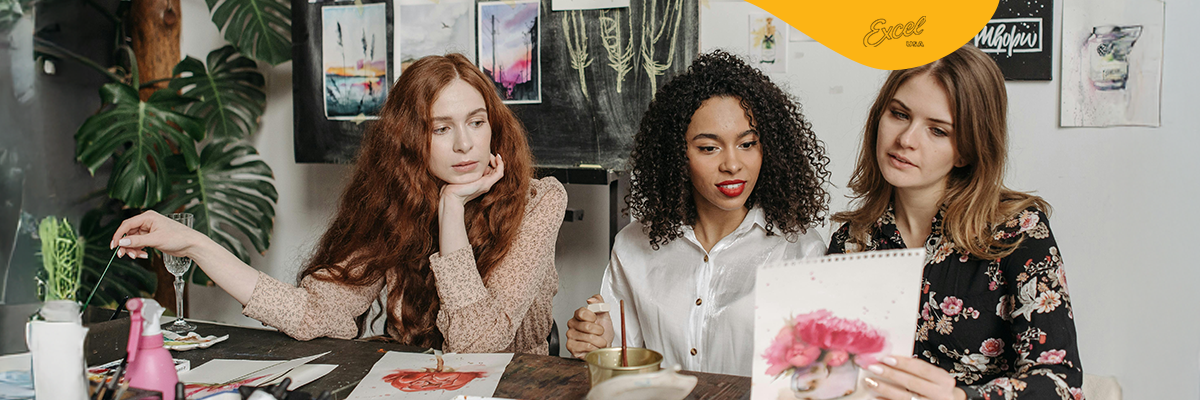
The Mental Health Benefits of Crafting + Best Tools for It
In a fast-paced world of constant digital distractions and daily stressors, many are turning to crafting as a form of therapy. Whether it’s scrapbooking, model building, sewing, painting, or papercutting, the simple act of creating with your hands offers deep psychological rewards.
This guide explores the powerful connection between crafting and mental health, backed by research and anecdotal evidence. Plus, we’ll highlight the best tools—like precision knives, cutting mats, and ergonomic handles—that enhance your crafting sessions for both joy and ease.
Why Crafting is Good for Mental Health
Crafting can positively impact mental well-being in many ways. The repetitive, focused nature of creating something from scratch activates the same areas of the brain that are stimulated during meditation or mindfulness practices.
1. Stress Reduction. Studies show that engaging in arts and crafts lowers cortisol, the body’s stress hormone. When your hands are busy, your mind has a chance to rest and recover from overstimulation.
2. Boosting Mood and Reducing Anxiety. Creating something tangible produces dopamine, the "feel-good" neurotransmitter. This natural reward system improves mood and can be a powerful tool for individuals managing anxiety or depression.
3. Improved Focus and Mindfulness. Whether you’re weeding vinyl, painting details on a miniature, or stitching a complex pattern, crafting promotes deep focus. This type of flow state is linked to better mental clarity and cognitive function.

Science-Backed Benefits of Creative Hobbies
Crafting and Neuroplasticity. Engaging in creative activities encourages the brain to form new neural pathways, which enhances learning and cognitive flexibility.
Reduced Risk of Cognitive Decline. According to a Mayo Clinic study, people who engaged in craft hobbies had a 30–50% reduced risk of developing mild cognitive impairment in old age.
Crafting Disciplines That Improve Mental Health
1. Scrapbooking and Journaling. Combines visual storytelling with reflection. Helps process emotions and build a narrative.
2. Model Building & Dioramas. Ideal for focusing on intricate detail and developing patience.
3. Papercutting & Origami. Boosts fine motor skills and mindfulness through repetition and precision.
4. Sewing, Embroidery & Crochet. The repetitive, rhythmic movements are calming and ideal for managing anxiety.
5. Jewelry Making. Improves attention to detail while providing a tangible creative outlet.
The Best Tools to Enhance the Crafting Experience
Using the right tools makes crafting smoother and more enjoyable, preventing frustration and physical strain.
1. Ergonomic Craft Knives. Excel Blades offers tools like the K26 Fit Grip Knife that are designed for comfort and control—ideal for long crafting sessions without hand fatigue.
2. Self-Healing Cutting Mats. A quality mat protects your surfaces and ensures clean, precise cuts. It also reduces noise and hand strain.
3. Precision Tweezers & Scissors. Useful for vinyl weeding, model detailing, and jewelry work. Stainless steel tweezers provide pinpoint accuracy.
4. Rotary Cutters and Rulers. For sewers and fabric crafters, rotary blades paired with non-slip rulers speed up cutting and maintain accuracy.
5. Hobby Files and Sanding Tools. Polish models, shape wood, or refine clay with minimal hand strain.

Crafting as a Daily Mindfulness Practice
Building a habit of creativity—even just 15–30 minutes a day—can compound mental health benefits over time.
Daily Crafting Routine Tips:
- Start with small projects like cardmaking or coloring
- Create a calming space with good lighting and music
- Schedule your crafting time as you would a meeting or workout
- Choose a medium that doesn’t stress you out
Common Mistakes to Avoid
Mistake 1: Using the Wrong Tools
Fix: Invest in ergonomic and high-quality tools to reduce physical strain.
Mistake 2: Overcomplicating Projects
Fix: Start small and scale up as your confidence and skill grow.
Mistake 3: Not Setting Aside Time
Fix: Treat crafting like a self-care ritual and stick to a regular routine.
Mistake 4: Comparing Your Work to Others
Fix: Focus on process, not perfection. Your work is for you.
Conclusion: Create for Joy, Heal Through Craft
Crafting isn’t just a hobby—it’s a mental health tool that can be practiced by anyone, at any age. Whether you’re struggling with anxiety, looking to decompress after a stressful day, or just want to reconnect with your creativity, crafting offers a path forward.
When paired with the right tools, your crafting time becomes more than a pastime—it becomes an act of self-care.
Next Reads:
-
Precision Tools for Jewelry Making: A Beginner's Guide
-
Best Craft Kits by Hobby - For Artists, Modelers, Cosplayers & DIYers
You May Also Watch: How to Make a Beautiful Crepe Paper Flower – Easy DIY Craft for Beginners